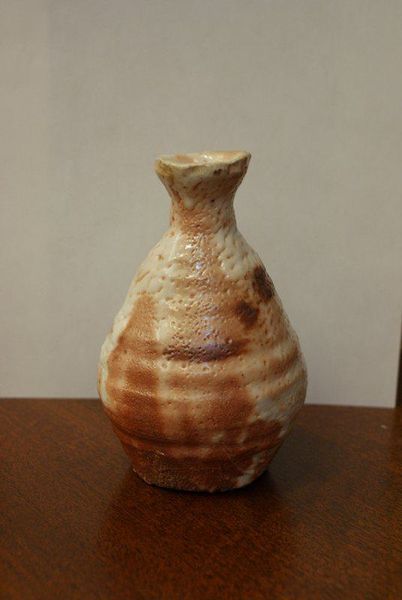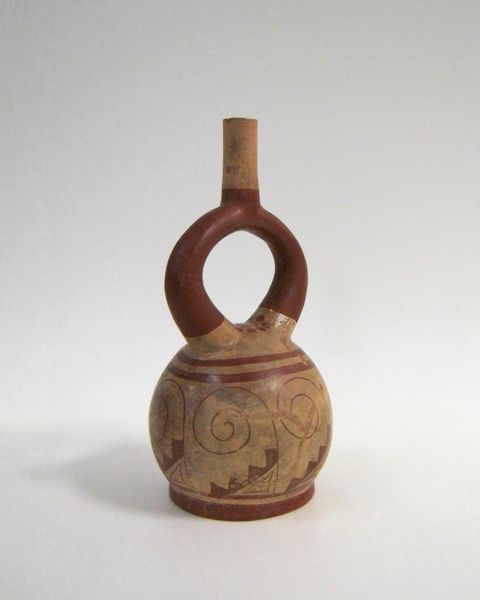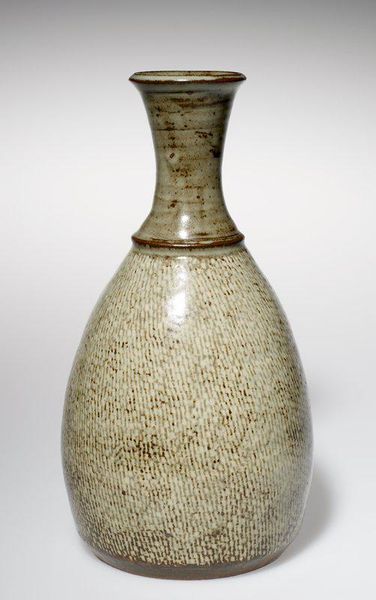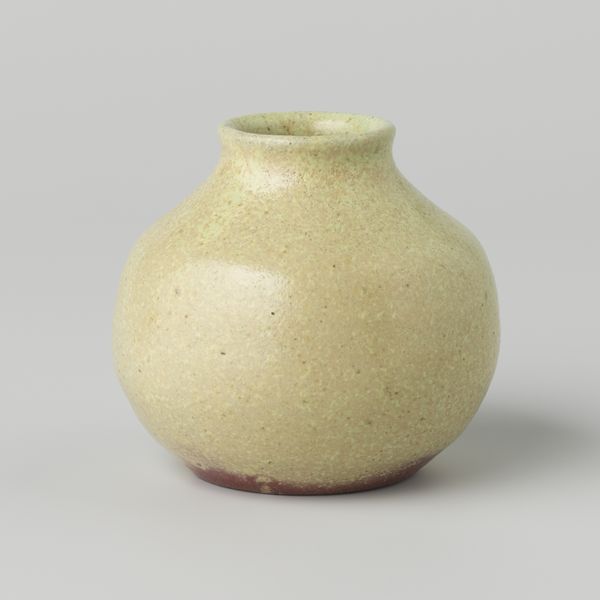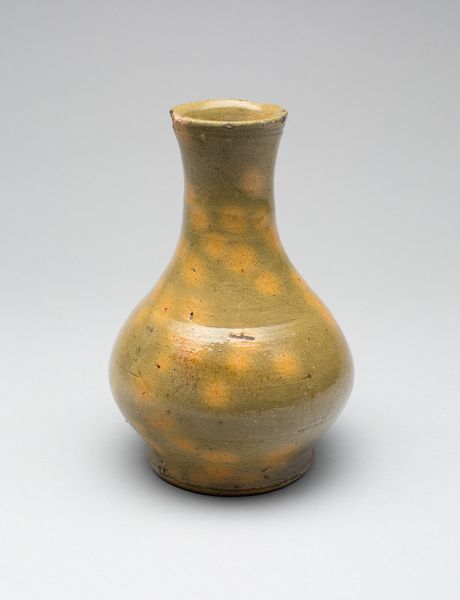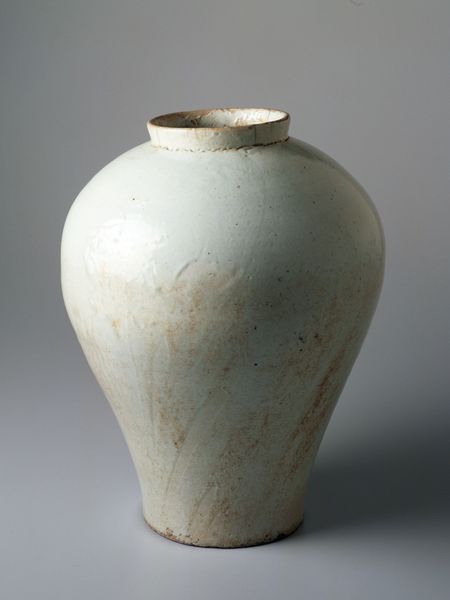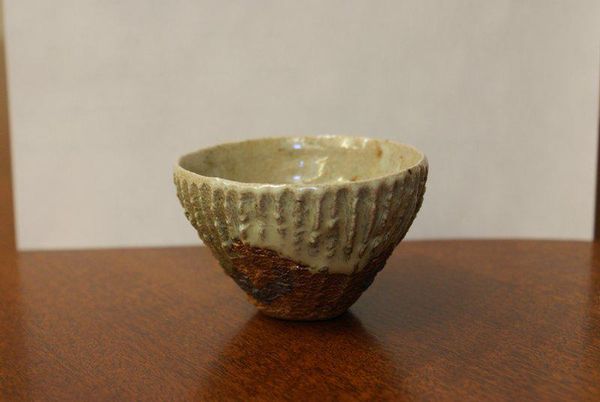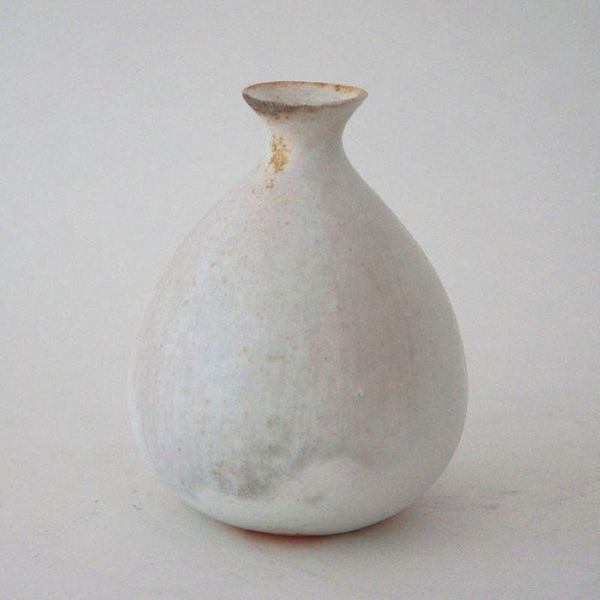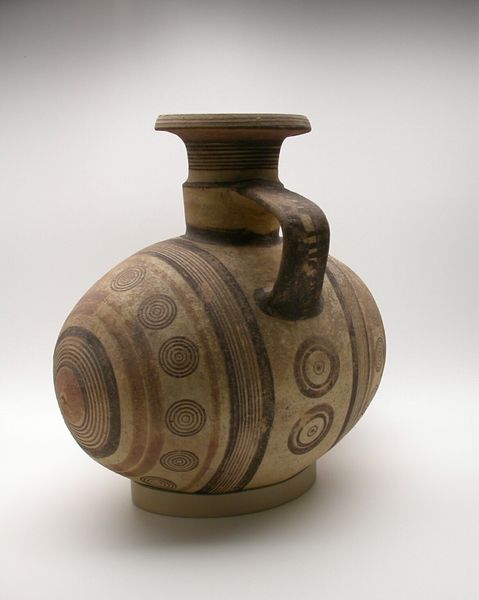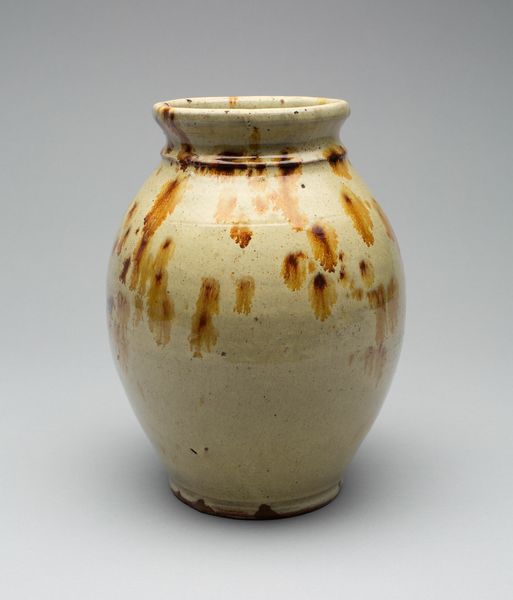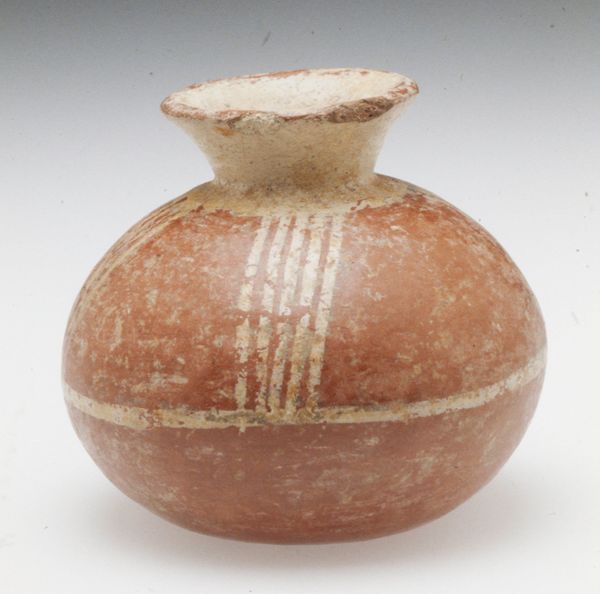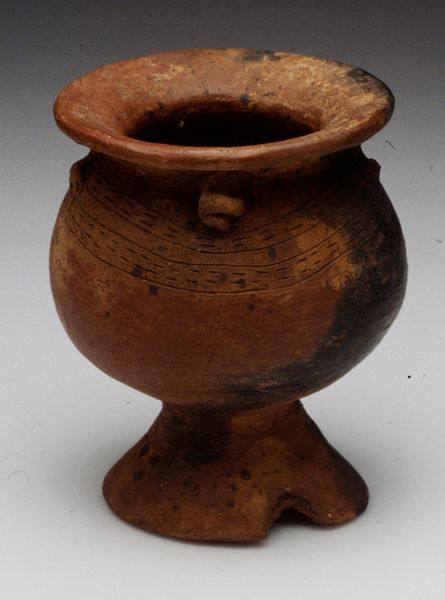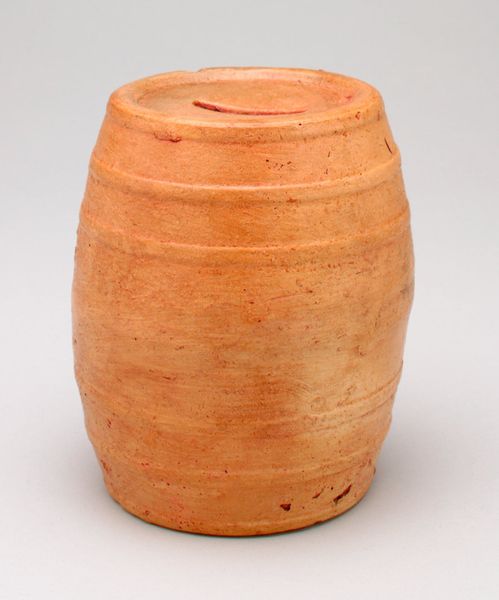
ceramic, earthenware
#
ceramic
#
earthenware
#
stoneware
#
geometric
#
earthenware
Dimensions: 5 3/16 × 3 7/16 × 3 7/16 in. (13.18 × 8.73 × 8.73 cm)
Copyright: No Known Copyright
Curator: The artwork before us, known as "Flask (tokkuri)," was crafted by Furutani Kazuya in the early 21st century. This exquisite piece, housed at the Minneapolis Institute of Art, utilizes the warmth and tactility of ceramic earthenware. Editor: There's a beautiful simplicity to its form. The gently rounded shape and earthy tone give it a real sense of groundedness and the rough texture creates a striking contrast. Curator: Indeed. Tokkuri, as flasks intended for sake, occupy an interesting intersection of the functional and the artistic, gaining cultural significance through use. How do you feel this vessel fits in its contemporary social role? Editor: Well, visually, the piece eschews clean lines and smooth surfaces in favor of a more organic form and uneven finish. The form’s curves imply generosity. Curator: Consider the stoneware it’s made of and the role this piece may fulfill today versus in older eras, you have a point, even small geometric patterns carry profound historical and communal weight in that region and society. How this translates across time could influence what a sake vessel should convey. Editor: The textured surface interacts with the light in an unusual way; it creates a play of shadow that accentuates its tactile quality. Curator: Texture is also important from a historic context because stoneware and earthenware changed as did methods for crafting ceramic, thus the evolution shows social trends. Editor: It feels quite modern and traditional at once. Curator: Precisely. That is part of what I think its contribution to culture is. Editor: Absolutely. Examining how line and texture affect perception of space has certainly offered much to my aesthetic comprehension.
Comments
No comments
Be the first to comment and join the conversation on the ultimate creative platform.
